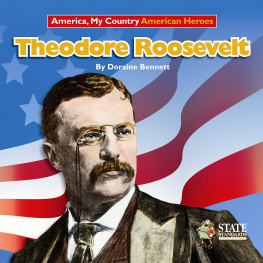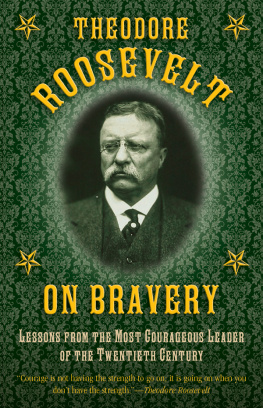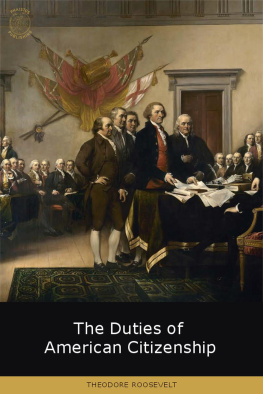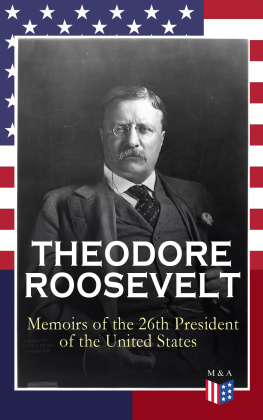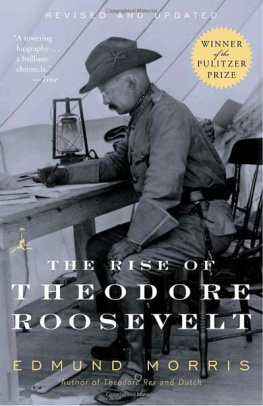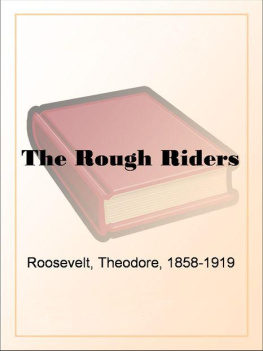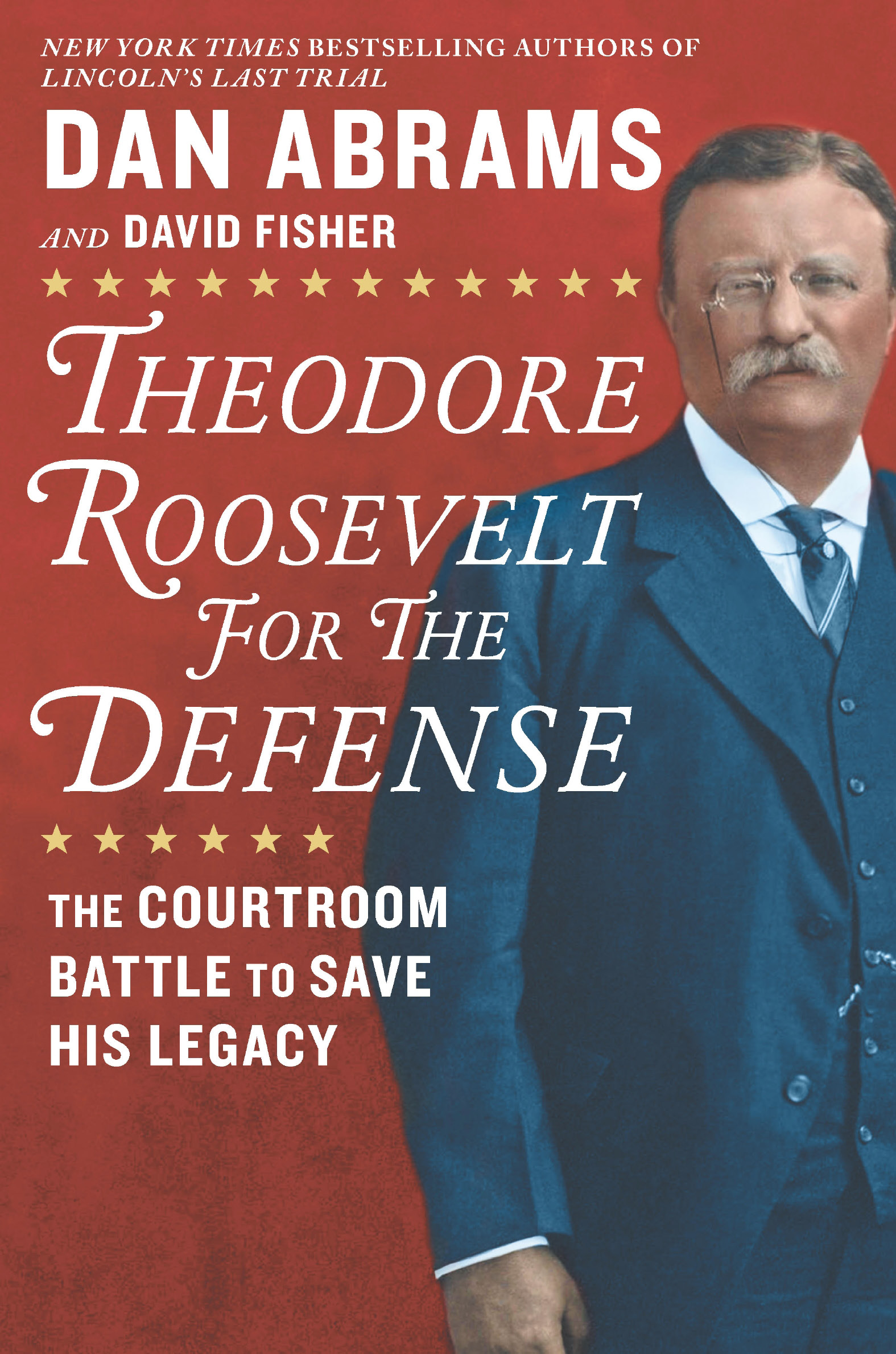
The New York Times bestselling authors of Lincolns Last Trial take readers inside the courtroom to witness the epic 1915 case in which Theodore Roosevelt, weighing one last presidential run, defended his integrity and challenged the political system.
No more dramatic courtroom scene has ever been enacted, reported the Syracuse Herald on May 22, 1915, as it covered the greatest libel suit in history, a battle fought between former president Theodore Roosevelt and the leader of the Republican party.
Roosevelt, the boisterous and mostly beloved legendary American hero, had accused his former friend and ally, now turned rival, William Barnes of political corruption. The furious Barnes responded by suing Roosevelt for an enormous sum that could have financially devastated him. The spectacle of Roosevelt defending himself in a lawsuit captured the imagination of the country, and more than fifty newspapers sent reporters to cover the trial. Accounts from inside and outside the courtroom combined with excerpts from the trial transcript give us Roosevelt in his own words and serve as the heart of Theodore Roosevelt for the Defense.
This was Roosevelts final fight to defend his political legacy, and perhaps regain his fading stature. He spent more than a week on the witness stand, revealing hidden secrets of the American political system, and then endured a merciless cross-examination. Witnesses including a young Franklin D. Roosevelt and a host of well-known political leaders were questioned by two of the most brilliant attorneys in the country.
Following the case through court transcripts, news reports and other primary sources, Dan Abrams and David Fisher present a high-definition picture of the American legal system in a nation standing on the precipice of the Great War, with its former president fighting for the ideals he held dear.
Praise for Theodore Roosevelt for the Defense
This beautifully wrought story of Theodore Roosevelts defense of his claims of corruption in New York State politics has intense echoes today. Abrams and Fisher do a superb job of clearly presenting the issues in this remarkable and intensely dramatic trial.
SCOTT TUROW
Growing up on Long Island just miles from Teddy Roosevelts historic home, I thought I knew just about everything about our twenty-sixth president. I was wrong. Using Roosevelts eight days of testimony, Dan Abrams and David Fisher present a fascinating window into the former President Roosevelt that is fresh and often surprising. This trial and Roosevelts defense of his reputation on the stand, often under fierce questioning, is truly mesmerizing.
BRIAN KILMEADE
Praise for Lincolns Last Trial
Dan Abrams and David Fisher write the heart-pounding pulse of history This book not only brings a rare transcript to life, it makes you feel as if you are watching a live camera riveted on a courtroom more than 150 years ago.
DIANE SAWYER
You didnt know that Abraham Lincoln was the defense lawyer in a notorious murder case on the eve of his presidency? Neither did I. But Dan Abrams and David Fisher tell the remarkable tale in Lincolns Last Trial , and the story is both compelling on its own terms and a lesson about some eternal truths about criminal justice.
JEFFREY TOOBIN
DAN ABRAMS is the chief legal affairs correspondent for ABC News as well as the host of top-rated Live PD on A&E Network and The Dan Abrams Show: Where Politics Meets the Law on SiriusXM. A graduate of Columbia University Law School, he is CEO and founder of Abrams Media, which includes the Law & Crime network. He lives in New York.
DAVID FISHER is the author of twenty-five New York Times bestsellers. He lives in New York with his wife, Laura.
Together, they are the authors of the New York Times bestseller Lincolns Last Trial, which received the 2018 Barondess/Lincoln Award.
Dan-Abrams.com
Also by Dan Abrams and David Fisher
Lincolns Last Trial
Dan Abrams and David Fisher
Theodore Roosevelt for the Defense
The Courtroom Battle to Save His Legacy

To my wonderful son, Everett, who I hope will develop a love for history that we can share together, along with so much else, for many years to come.
Contents
INTRODUCTION
The first time I heard about the Trial of the Century I was a twenty-eight-year-old newly minted lawyer who, only through a series of mishaps and bad luck for other, more qualified journalists, had suddenly been tasked with covering what felt like the nations most momentous legal story. Not only was I covering it, but I had secured one of a handful of coveted courtroom seats allocated for a cable channel called Court TV. Courtroom cameras were a relatively new phenomenon, cable news was still in its infancy and the defendant, former football great and actor OJ Simpson, was one of the best-known Americans in any field. His defense, that he had been targeted and ultimately framed by a racist Los Angeles police department, only added heat to what already felt like a boiling public cauldron. The result was a nation transfixed by everything from the most consequential to the most picayune moments of his trial for the murder of his ex-wife Nicole Brown Simpson and her friend Ron Goldman.
Waiting outside the courtroom before the first preliminary hearing, as we ended up doing for long stretches, I recall a local Los Angeles TV reporter concluding a live report with his stentorian voice reverberating in the hallway: Many now saying that this could become the trial of the century. As the case moved forward, that became a common refrain and to many of us living the trial, it felt like there could never have been another that rivaled it in terms of media and public interest.
In retrospect, however, it might have been more accurate to have called it the trial of the decade or even arguably of my lifetime. From the Lindbergh kidnapping case to the Nuremberg and Eichmann trials, to the Scopes and the Leopold and Loeb cases, there have been at least twenty other twentieth-century trials dubbed the trial of the century, all captivating based on the nature of the crimes or the identity of the defendants or victims. But only one involved a former president of the United States testifying in his own defense for over a week, and with testimony that would expose the underbelly of seedy political backdoor deal making and even profiteering. Barnes v. Roosevelt also didnt involve just any former president taking the witness stand. Teddy Roosevelt was one of the most charismatic and entertaining presidents that the nation had, and has, ever seen.
He didnt disappoint, offering animated and at times blistering testimony for an audience that extended well beyond the courtroom. The majority of the other witnesses were a whos who of New Yorks political leaders, including many household names at the time and others like Franklin D. Roosevelt who would go on to achieve so much more.
Teddy Roosevelt readily admitted that he had written, and then caused to be widely circulated, an article criticizing the political system, its leaders and what he said was their abuse of power. And while he could have been coy and suggested that his condemnation was broad and not specifically meant to single out Republican party boss William Barnes, he chose to stand by every word and sought to prove that Barnes was in fact corrupt.
As a legal matter, it was a defense far more difficult than it would be today. Roosevelts attacks on Barnes were determined by the judge to be defamatory or libelous per se. Before the 1964 New York Times v. Sullivan case and its progeny, once that determination was made, if the defendant could not then prove the statements true, the only real issue would be the amount of damages awarded. Today, however, a political leader would have to overcome a far higher legal hurdle to even get to trial over a political jab. This type of public figure plaintiff would now have to demonstrate not just that the statement was defamatory, but would be obliged to prove that it was false and that the defendant knew or suspected it to be so.
Next page


